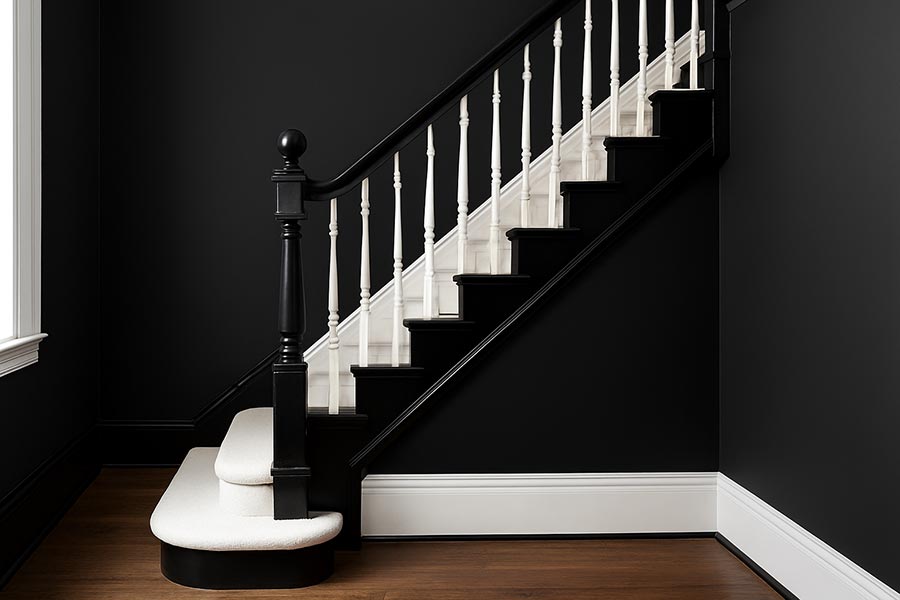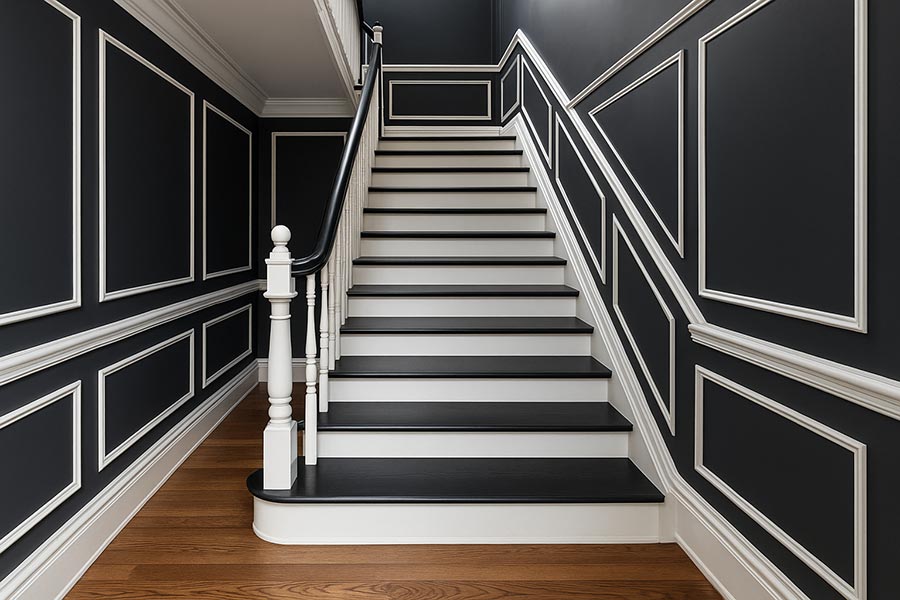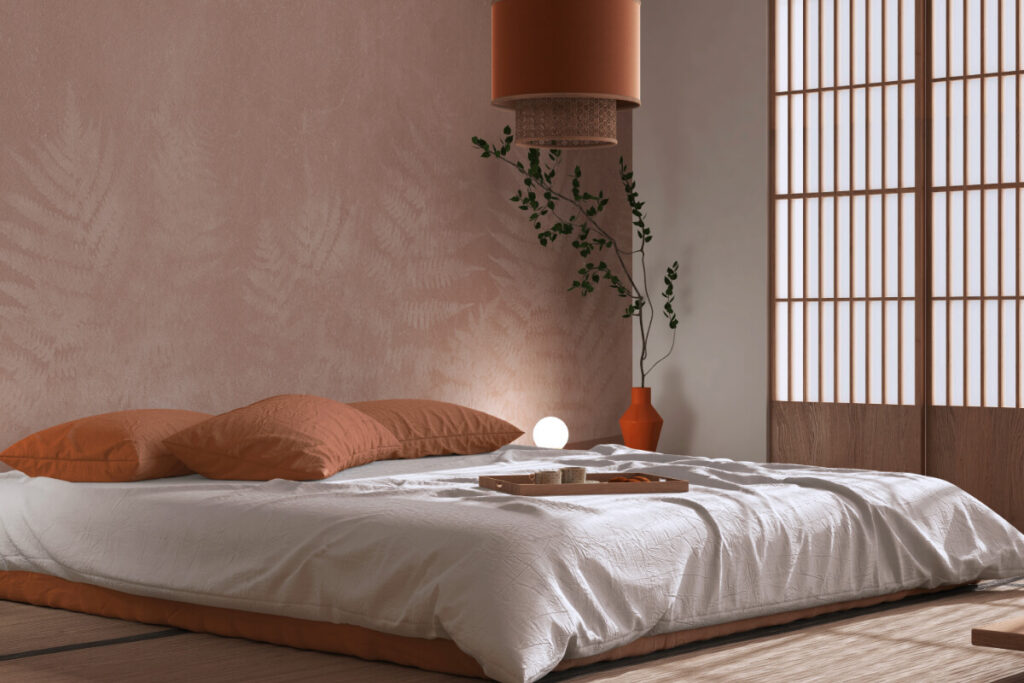In the world of compact living, every square foot tells a story, and perhaps nowhere is this more evident than in the humble hallway. What was once dismissed as mere transitional space has emerged as an unexpected star in contemporary home design, with savvy homeowners discovering that strategic interior painting choices can transform these narrow corridors into dramatic statements that belie their modest dimensions. The marriage of black and white in these intimate spaces creates a visual dialogue that’s both timeless and thoroughly modern.
The psychology behind this transformation runs deeper than aesthetic preference. Environmental psychologists have long recognised that the spaces we inhabit profoundly influence our behaviour and emotional well-being, and hallways—despite their transitional nature—play a crucial role in how we experience our homes. When executed thoughtfully, a black and white hallway becomes more than decoration; it becomes an architectural punctuation mark that defines the rhythm of daily life within compact walls.
The Psychological Impact of Monochrome Spaces
The human brain responds to contrast in fascinating ways, and nowhere is this more apparent than in the careful orchestration of black and white within confined spaces. Research in environmental psychology reveals that high-contrast environments can actually make small spaces feel more defined and purposeful rather than cramped. When homeowners opt for this bold palette in their hallways, they’re tapping into something far more sophisticated than simple colour theory.
Dr. Sally Augustin, an environmental psychologist who studies the intersection of design and human behaviour, explains that monochromatic schemes with strong contrast create what she terms “cognitive anchoring”—our minds use these visual cues to better understand and navigate space. In practical terms, this means a black and white hallway can actually make a compact home feel more organised and intentional, countering the chaos that often accompanies small-space living.

Creating Depth Through Strategic Contrast
The magic of black and white lies not in the colours themselves but in their relationship to one another and the architecture they inhabit. Contemporary designers have moved far beyond the predictable approach of white walls with black accents, instead embracing more nuanced applications that play with perception and scale. One increasingly popular technique involves pairing white walls with black floor tiles or a black and white patterned runner to create contrast, whilst maintaining the sense of flow essential in compact spaces.
The key lies in understanding balance—too much black can indeed feel overwhelming in a narrow corridor, but used judiciously, it creates focal points that draw the eye and make the space feel intentionally designed rather than accidentally cramped. Some of the most successful black and white hallways employ what interior architects call the “punctuation method”—using black elements as visual full stops that give rhythm to the space without overwhelming it.
Lighting as the Third Element
In the trinity of successful black and white design, lighting serves as the crucial mediator between contrast and comfort. The interplay between these opposing tones becomes truly dynamic only when illumination is carefully considered. Proper lighting is essential for creating a welcoming atmosphere in your hallway, incorporating a mix of ambient, task, and accent lighting to illuminate the space and highlight architectural features.
Natural light, where available, brings these spaces to life in ways that artificial illumination alone cannot achieve. The way morning sun catches white walls whilst casting dramatic shadows from black elements creates an ever-changing tableau throughout the day. For hallways lacking windows, layered lighting becomes even more critical—wall sconces positioned at regular intervals can create the illusion of natural rhythm, whilst strategically placed mirrors amplify whatever light is available.

The Art of Proportion and Pattern
The most successful black and white hallways understand that pattern and proportion are just as important as colour choice. Black and white checkerboard floors are a bold design element that never goes out of style, but their success depends entirely on scale and context. In a narrow hallway, large-scale patterns can feel overwhelming, whilst patterns that are too small may appear busy and contribute to visual clutter.
Contemporary designers often employ what’s known as the “golden ratio” approach—using patterns and contrasts that follow mathematical principles of visual harmony. This might manifest as a black wainscoting that reaches precisely one-third of the way up white walls, or a series of black picture frames arranged in odd-numbered groupings that create visual interest without chaos. The goal is always to enhance the architecture rather than compete with it.
Storage Solutions That Embrace the Aesthetic
One of the greatest challenges in compact homes is storage, and black and white hallways offer unique opportunities to address this need whilst maintaining aesthetic integrity. Built-in solutions painted to match the overall scheme can virtually disappear into the architecture, creating storage that doesn’t feel like an afterthought. Built-in storage should be a high-priority design element in a small hallway, as it’s a game-changing upgrade.
The monochromatic palette lends itself particularly well to minimalist storage solutions—sleek black shelving against white walls, or white storage benches with black hardware. These elements serve double duty, providing necessary function whilst contributing to the overall design narrative. The key is ensuring that storage feels intentional rather than imposed, seamlessly integrated into the hallway’s visual story.
Future-Proofing Your Design Investment
Whilst trends come and go with seasonal regularity, the black and white hallway represents something more enduring—a return to fundamental design principles that transcend fashion. Black and white is a classic colour pairing that never goes out of style, making it particularly appealing for homeowners who want to make a significant design investment without fear of dating their space.
The 2025 design forecast suggests that whilst bold colours are gaining popularity, the sophisticated simplicity of monochromatic schemes continues to resonate with homeowners seeking timeless elegance. The key to future-proofing lies in choosing quality materials and classic proportions that can accommodate changing accessories and artwork without requiring wholesale renovation.
The Transformative Power of Thoughtful Design
The black and white hallway represents more than a design trend—it embodies a philosophy that small spaces deserve the same thoughtful consideration as grand rooms. In an era where compact living has become not just necessity but choice for many, these dramatic corridors prove that limitations can inspire rather than constrain creativity. The careful balance of contrast and harmony creates spaces that feel both intimate and expansive, challenging our preconceptions about what constitutes successful small-space design.
As we navigate an increasingly complex world, there’s something deeply satisfying about the clarity that black and white provides. These hallways offer a moment of visual rest—a pause between the bustle of living spaces that allows us to appreciate the power of simplicity. In compact homes where every design decision carries weight, the black and white hallway stands as proof that sometimes the most dramatic statements come from the most fundamental choices.



